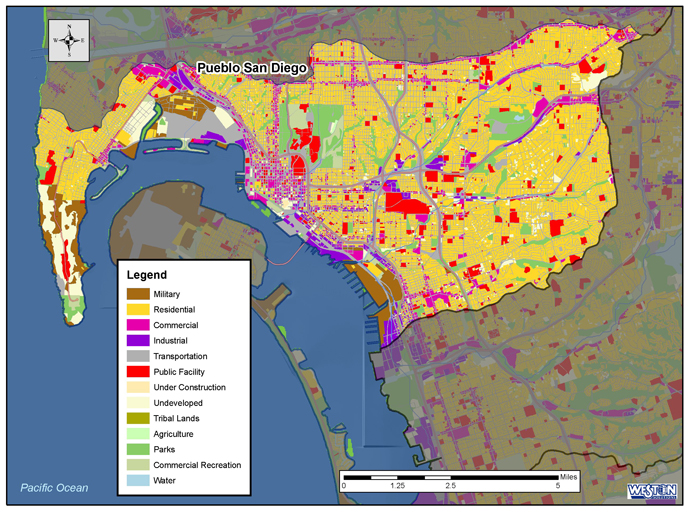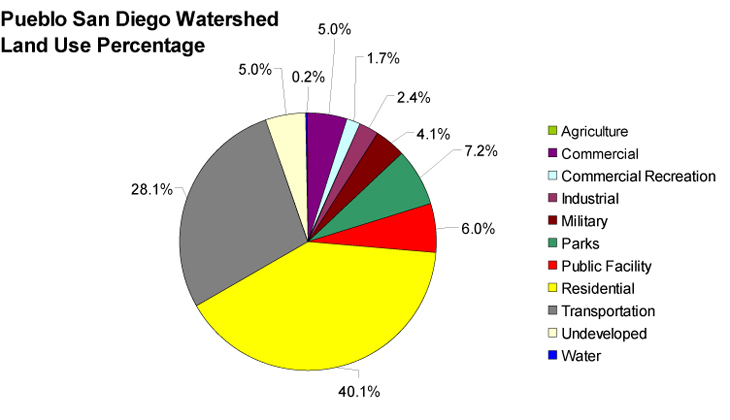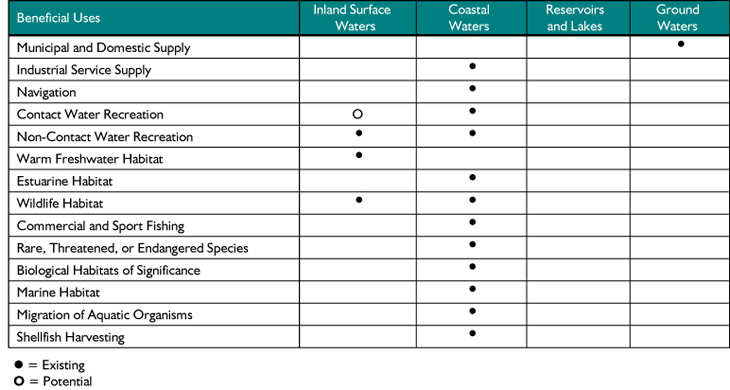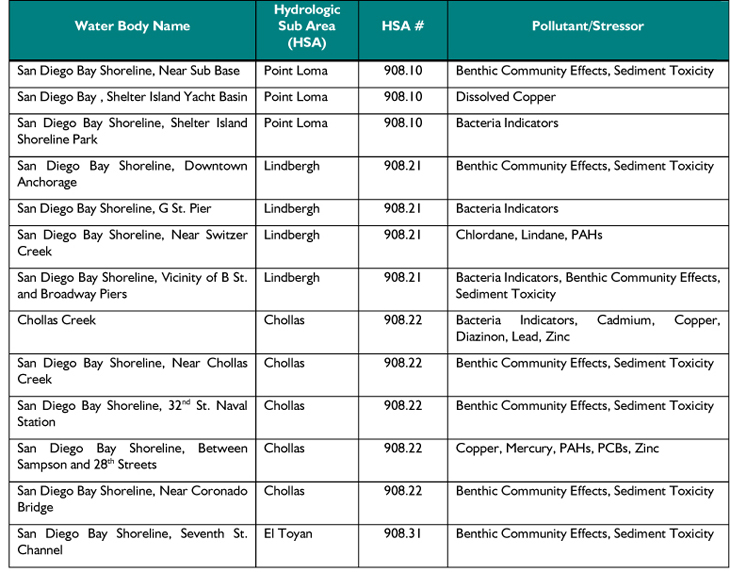
****JavaScript web menu drop down DHTML menu generated by NavStudio. (OpenCube Inc. - http://www.opencube.com)****
|
||||||||||||||||||
THE PUEBLO SAN DIEGO WATERSHED (HU 908.00)
The Pueblo San Diego watershed lies within the San Diego Bay WMA and is the smallest of the three San Diego Bay WMA watersheds, covering just over 36,000 acres. It is comprised of three hydrologic areas: Point Loma, San Diego Mesa, and National City . Major water bodies include Chollas Creek, Paleta Creek, and San Diego Bay. Pueblo San Diego is the most developed and densely populated watershed in the San Diego Bay WMA. Largely contained within the City of San Diego , population in the watershed is expected to reach over 591,000 by the year 2015. Land use in the watershed is primarily residential (40.1%), transportation (28.1%), and parks and recreation (7.2%). The majority of land is privately owned with only a small percentage owned by government. Other jurisdictions include La Mesa , Lemon Grove, National City , San Diego Unified Port District, and a small percentage of unincorporated land.
Most of the beneficial uses for this watershed lie in its coastal waters , including those of the Bay (Table 1). Major impacts on water quality include surface water degradation, habitat degradation, sediment toxicity, and sewer overflows. Constituents of concern include trace metals and other toxic substances, and coliform bacteria (San Diego County 2002). Table 2 presents water bodies placed on the SWRCB 2002 303(d) list for this watershed. Rainfall for the Pueblo San Diego watershed is light with an average rainfall of 10.5 inches in coastal areas to 13.5 inches in the eastern portion of the watershed. TABLE 1: Beneficial uses within the Pueblo San Diego Watershed
Source: Basin Plan September 8, 1994 (Tables 2-2, 2-3, 2-4, 2-5) TABLE 2: Water bodies on the SWRCB 303(d) list in the Pueblo San Diego Watershed
|
||||||||||||||||||


